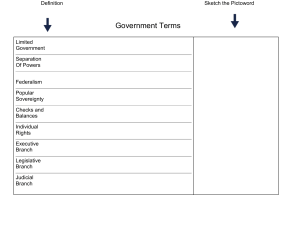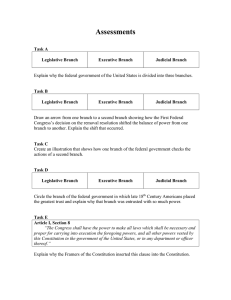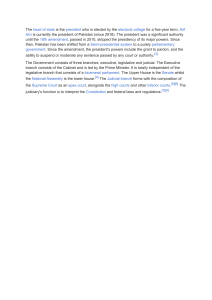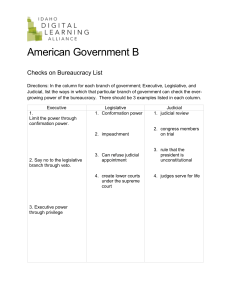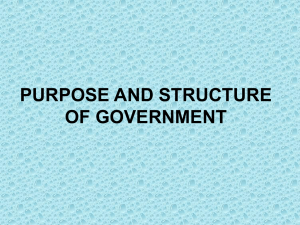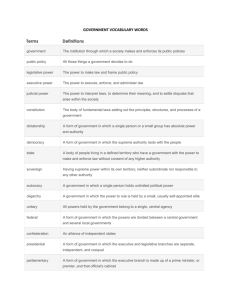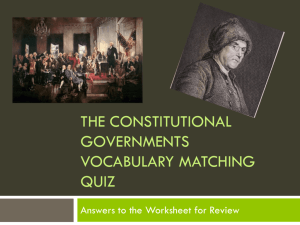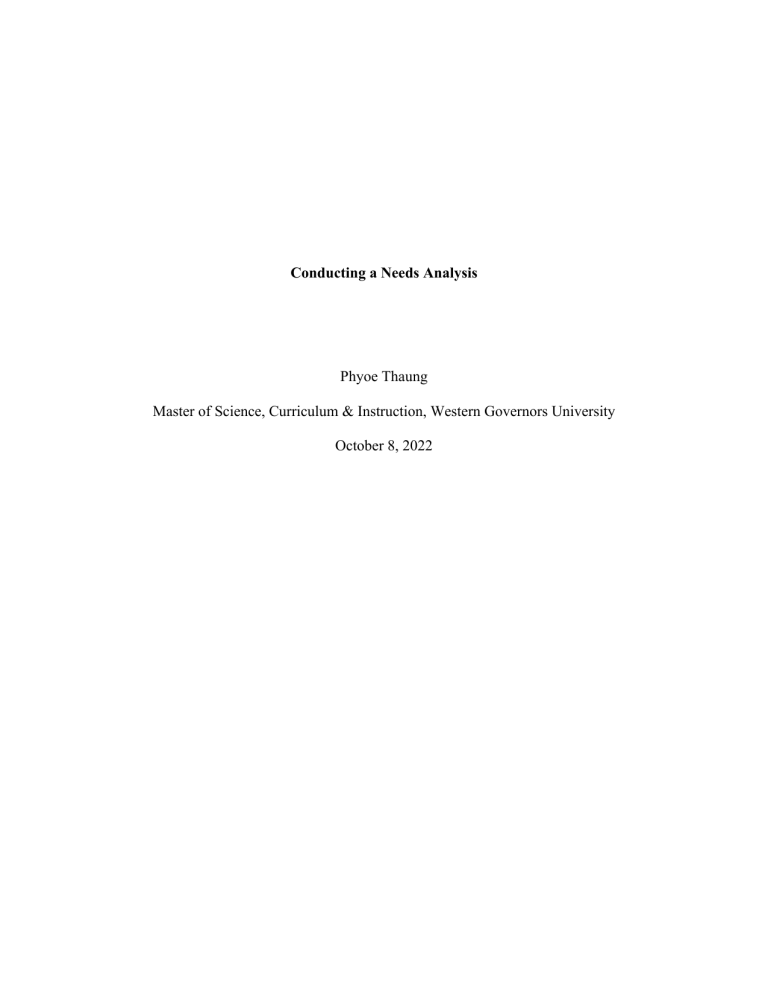
Conducting a Needs Analysis Phyoe Thaung Master of Science, Curriculum & Instruction, Western Governors University October 8, 2022 State or National Standard The topic being covered in this unit is over the United States Government for 8th grade social studies. Specifically, the unit covers the Arizona State Standards for Social Studies of 8.C3.3 Compare the structures, powers, and limits of government at distinct levels in the United States Government. (History and Social Science Standards, 2018) Unpacking the Standard First, students should know key vocabulary that will be discussed in the unit such as: checks and balances, separation of powers, limited government, executive branch, legislative branch, and judicial branch. Students should know the definition of each of the key vocabulary to understand their role within U.S. Government (e.g., separation of powers is in place so that one branch of government doesn’t become too powerful, checks and balances as a feature help uphold that system). Next, students should understand roles of each branch of the U.S. Government and how each branch keeps one another from being too powerful. Students should be able to demonstrate their understanding of key vocabulary (e.g., checks and balances) by being able to identify examples of how they are demonstrated in practice. Finally, at the conclusion of the unit, students should be able to accurately identify the specific powers of each branch of government and how they are able to exercise limitations over one another to create a system of checks and balance. Evaluation Instrument To evaluate students’ prior knowledge, I conducted a multiple-choice pre-assessment that asked students to identify the roles, responsibilities, and limits of power between each branch of government, connecting to the state standards for this unit. I used the pre-assessment and multiple-choice format to see students’ overall prior knowledge of the unit and specific gaps of knowledge by identifying trends that indicate commonly missed questions. The answers marked in yellow indicate which answers are correct. Three Branches of Power Pre-Assessment 1) This branch of government consists of the President & Vice-President; responsible for enforcing laws a. Executive Branch b. Judicial Branch c. Legislative Branch 2) This branch of government consists of Senators and Representatives that are voted into office by the public, responsible for writing laws. a. Executive Branch b. Judicial Branch c. Legislative Branch 3) This branch of government consists of justices that serve for life on the Supreme Court; responsible for determining laws as constitutional. a. Executive Branch b. Judicial Branch c. Legislative Branch 4) Being able to appoint judges is an example of…. a. Executive Power over Judicial Branch b. Legislative Power over Judicial Branch & Executive Branch c. Executive Power over Legislative Branch d. Legislative Power over Executive Branch 5) Being able to veto a law is an example of….. a. Executive Power over Judicial Branch b. Legislative Power over Judicial Branch & Executive Branch c. Executive Power over Legislative Branch d. Legislative Power over Executive Branch 6) Being able to override a veto with a 2/3 vote is an example of…. a. Executive Power over Judicial Branch b. Legislative Power over Judicial Branch & Executive Branch c. Executive Power over Legislative Branch d. Legislative Power over Executive Branch 7) Being able to determine if a law is unconstitutional is an example of…. a. Executive Power over Judicial Branch b. Legislative Power over Judicial Branch & Executive Branch c. Executive Power over Legislative Branch d. Judicial Power over Legislative & Executive Branch 8) Being able to impeach President or Justices is an example of… a. Executive Power over Judicial Branch b. Legislative Power over Judicial Branch & Executive Branch c. Executive Power over Legislative Branch d. Legislative Power over Executive Branch Description of the Gap There were 160 students who took the pre-assessment. I analyzed the results of the preassessment, which determined that students were most successful at identifying the descriptions and general roles of each branch of government. Students identified questions 1 – 3 with a collective accuracy of 80% while only receiving an accuracy score of 65% for questions 4 – 8. This revealed that students gap in knowledge was being able to identify specific roles of each branch of government and their limitations on one another to enforce a system of check and balance. Specifically, students struggled to identify the difference between Executive and Legislative powers as questions 4, 5, and 6 received the lowest accuracy scores of 55%, 60%, and 50%, respectively. All students should be able to accurately identify the limitations of each branch of government over one another. Specifically, students will need to be able to better differentiate between powers and limitations of the Executive and Legislative Branch to meet the state standard for social studies. Content or Skills Needed Students will need to revisit content that addresses specific differences and powers between the three branches of government in the U.S. Students will be given a self-paced flashcard set with more scenarios identifying specific powers and limitations of the three branches of government to study. Within the next lesson, a short 10-minute recap lesson will also be implemented to reteach the content relating to the knowledge gap. Students will practice the flash card set for one week and will retake a quiz similar to the pre-assessment but with different scenarios to measure if students have successfully closed the knowledge gap. References Arizona Department of Education. (2018). History and Social Science Standards. Arizona Department of Education. https://www.azed.gov/sites/default/files/2019/06/6 8%20Grade%20Band%20Standards%20as%20a%20Glance%206.10.19.pdf?id=5d016d 21dcb250334288aae
